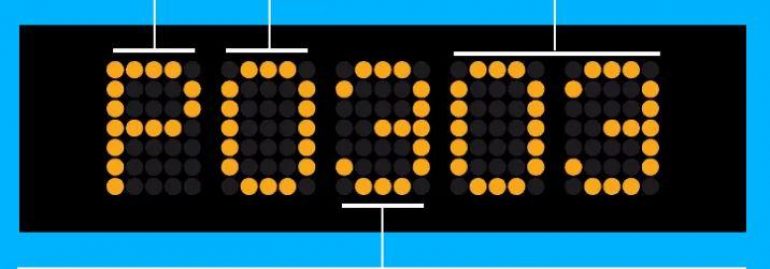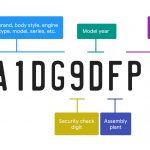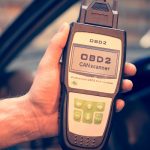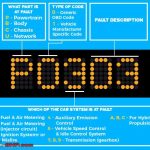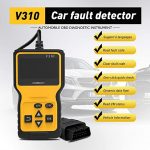
If you’re a newbie to car code diagnostics, you may be wondering what codes to look for. The first thing you need to know is that most codes begin with “p”, and most are related to the powertrain. However, some professional-grade scanners will also show codes starting with b (body) and c (chassis), as well as u (computer or communications problems).
OBDII Scanner
Using an OBDII Scanner to check your vehicle’s codes is easy. The port is located in the dashboard, under the steering wheel column. You can also find it in areas four to nine. Once you plug your scanner into the port, it will display a list of codes. Before interpreting the code, you should know what it means and where to find it online. To get started, check out our guide to OBDII code diagnostics.
OBD-II scanners use a unique port to communicate with the car. They are typically triangular in shape and are connected to the car’s computer via a connector known as the Diagnostic Link Connector (DLC). These scanners can read the code on your car and determine what’s wrong with it. Most scanners also display messages like “searching for protocol” while it’s connecting to the vehicle.
OBD-II codes are composed of four numeric digits and a letter prefix. The first numeric digit indicates the type of code. The second numeric digit indicates which specific system is having the problem. The last two digits specify the fault designation. You can then use the codes to troubleshoot your car. OBD-II codes can help you avoid dangerous situations while driving and to increase the performance of your car.
OBD-II scanners are great for anyone who is looking to save money. The latest models are Bluetooth-enabled and support all OBD-II protocols. A few models even work with Android and iOS devices. A basic scan tool is useful, but is unlikely to provide you with the advanced diagnostics you’ll need. This type of scan tool can be a lifesaver if your ABS light comes on.
The OBD port is located underneath the driver’s side of the dashboard near the pedals. To access the OBD port, you should be within three feet of the steering wheel. The OBD port connector is a trapezoidal-shaped connector. Plugging in your OBD scanner means you can connect it to your vehicle’s diagnostic port. Once plugged in, the scan tool will automatically power up.
Diagnostic Trouble Codes
If you are in a panic when you see your car’s check engine light illuminate, you may not be able to determine where the problem lies. However, diagnostic trouble codes can help you find the root cause of your car’s problems and determine the best course of action to take. For the most part, you can clear DTCs yourself by using a tool or by taking your vehicle to a mechanic. However, there are some instances when clearing the DTCs will not work. If you are unsure of what your car’s DTC means, consult with a mechanic to determine the cause of the problem.
A DTC is a code produced by your vehicle’s on-board computer. Each DTC corresponds to a specific type of fault. You can read a DTC with a device such as an asTech(r) Remote Diagnostic Device. Master technicians at CDS are skilled in reading these codes and can offer diagnostic advice that will help you repair the problem. Listed below are the common problems that can be solved by identifying the cause of the DTCs.
Some diagnostic trouble codes are generic, while others are specific to a specific car manufacturer. These codes can be difficult to interpret, but you should be aware that each model has different codes. If you find the code for a Ford, you will probably notice a very different problem than that of a Chevrolet. As such, the methods for troubleshooting will vary accordingly. You may need specialized equipment to perform these diagnostics on your vehicle.
To determine which diagnostic trouble codes are relevant to your vehicle, you should first determine what type of problem it has. If you are experiencing difficulty in steering or need steering assistance, you should visit a mechanic. In addition, you should check your steering angle sensor. The steering column may be damaged, causing the problem. The next section of troubleshooting focuses on a more widespread problem: a transmission problem. If you have problems with your transmission, this code may be a clue to the problem.
Misleading codes
If you’ve ever had a car that keeps resetting error codes, you’ve probably seen the ghost problem. In this scenario, the computer mistakenly thinks that one part is faulty, while it’s really fingering another component. This scenario can be frustrating and time-consuming, but fortunately, there’s a simple solution: learn how to interpret error codes and how to fix them.
One way to fix this problem is to learn the rules of medical coding. The process of coding is essential to a practice’s success, since incorrect coding can delay or limit payments. A recent survey from MEREM Healthcare Solutions showed that nearly half of claims were rejected upon submission. Once denials are corrected, reimbursement depends on how quickly and thoroughly a practice is able to resolve the issue. Here are some tips to help you improve your coding.
First, remember that the Check Engine Light only illuminates certain codes. Other codes might indicate other issues, such as body or chassis malfunctions. A code that starts with p means that the system that’s faulty is connected to the powertrain. The “B” and “C” codes signal problems with the body or chassis. The “U” code, on the other hand, means that the car has problems with the computer or network.
Other misleading codes in code diagnostics include the “A” and the “N” characters. The first two characters stand for the engine, transmission, and driveshaft, while the third character represents the user network, which manages the functions of the car’s onboard computer. The third character is either a number from 1 to nine or a letter, A-B-C-A-C-C. When you see these codes, it is important to know what they mean.
Despite being a confusing hazard, there are some common problems that can be fixed using code diagnostics. One common mistake that drivers make is ignoring generic codes for common issues. These codes are typically not recognizable to a layperson, so it is important to know which codes are the most likely to help. You can also use a scan tool to narrow down the causes. In some cases, you can even pinpoint the exact problem.


